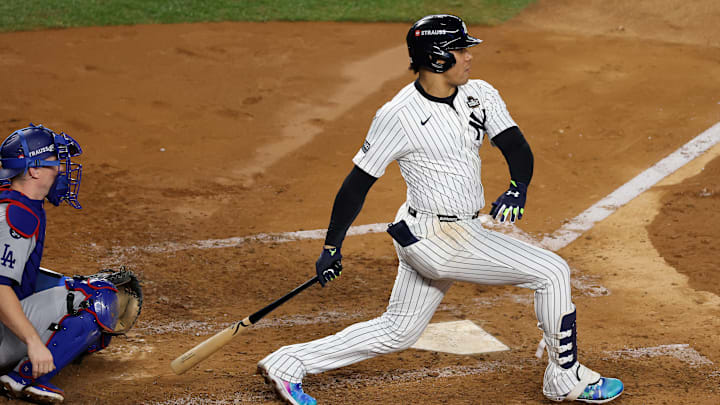Congratulations to the World Series Champion Los Angeles Dodgers, who won a second Fall Classic this decade. With the 2024 season now behind us, it’s time to turn to the offseason and crank up the hot stove. For Blue Jays fans, that surely implies contract extensions, big free agent signings, trades and a revamped bullpen as they retool toward a more competitive result next season.
There is a smorgasbord of elite free agent bats and arms to pursue over the next 4~5 months, including power bats, aces and high-leverage relievers. It’s one of the strongest free agent classes in recent memory, and the Blue Jays should be wading into the deep end of this pool given the statement from team president Mark Shapiro that payroll is “not going to limit anybody [GM Ross Atkins] pursues in the offseason — anybody. So there's always some flexibility within that number.”
Blue Jays didn't get under the luxury tax threshold for 2024
However, with FanGraph’s RosterResource suggesting that Toronto’s front office was unable to get below the 2024 competitive balance tax (CBT) threshold of $237M by the end of the season, there’s a possibility that Toronto triggered the luxury tax for a second consecutive year in 2024.
Asked whether the Blue Jays ducked under the CBT thereby resetting their tax rate for 2025, Ross Atkins said on a Zoom call with reporters that Jays are now "on the razor’s edge.”
— Ben Nicholson-Smith (@bnicholsonsmith) July 30, 2024
RosterResource sees the Blue Jays’ CBT (“luxury tax”) payroll at $240M for 2024, above the $237M threshold which triggers the tax. That includes the cash compensation Toronto sent along with players in their trade deadline moves in July, which gets added back to the payroll for luxury tax calculations, including the $1.66M sent to the Dodgers along with Kevin Kiermaier, the $2M sent to Seattle with Justin Turner, and the $1M in 2024 and $1.2M in 2025 sent with Isiah Kiner-Falefa to Pittsburgh.
Where that has implications for the Blue Jays this offseason is if they sign a free agent who is extended a $21.05M qualifying offer (QO) on Nov. 4. Players who receive a QO then have 10 days to decide whether or not to take it. If they reject the QO, they become free agents attached to draft pick compensation.
Last year, seven players received the QO, but all of them rejected it. In fact, per Thomas Harriman of MLB, “From the time the system was implemented in 2012, only 13 of the 131 players to receive a QO have accepted it.”
Where that becomes problematic for Toronto is clear when you look at the names of likely qualifying offer candidates, including Willy Adames, Pete Alonso, Alex Bregman, Corbin Burnes, Max Fried, Teoscar Hernández, Sean Manaea, Anthony Santander and Juan Soto. Other free agents of interest like Ha-Seong Kim, Tyler O’Neill, Jurickson Profar and Christian Walker are all on the QO bubble.
If the Blue Jays did, in fact, trigger the luxury tax again this year, that means they will have to pay draft pick compensation to the team from whom they sign any of those players listed above who do receive a qualifying offer. As per Harrigan’s article:
“A team that exceeded the CBT threshold in the preceding season will lose its second- and fifth-highest selections in the following year's Draft, as well as $1M from its international bonus pool for the upcoming signing period. If such a team signs multiple qualifying-offer free agents, it will forfeit its third- and sixth-highest picks as well.”
For an organization that has struggled to draft and develop MLB talent in recent years, giving up draft picks and international bonus pool money seems suboptimal. And if Atkins was indeed unable to get under the $237M luxury tax payroll threshold with his trades in July, it’s just another indignity suffered by Blue Jays fans who already watched their team fall to fifth place in the AL East, 20 games back of the American League pennant-winning Yankees.
